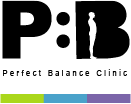Are you struggling with hypermobility? Do you want to improve your hypermobile joints? This article will provide you with information on how to train with hypermobility.
“It’s very important that your motion is controlled, and you work on increasing that strength throughout that full range of motions”
What is joint hypermobility syndrome? How you should adapt your training when you have hypermobile joints?
People affected by hypermobility have ligaments that tend to be lax and are more prone to sprains and joint dislocations. Therefore, the main concern for their training would be to increase the strength of the muscles surrounding the joints. As well as, increasing the strength of the muscle throughout the range of motion. It’s very important that the motion is controlled, and you work on increasing that strength throughout that full range of motion, as opposed to just performing fast and uncontrolled movements. Another important thing is to improve the body’s proprioception.
Here are four tips on how to go about the training when you have hypermobile joints:
- Target small, stabilising muscles before performing bigger, compound movements. For example, you could perform shoulder rotations to activate the rotator cuff muscle before performing bigger shoulder presses and movement. This will make sure that the brain and muscle communication works at its peak, and you will have better control and improved stability throughout the movement.
- Use isometric contractions at different angles. The great thing about it is that you don’t have to go straight into five-minute holds, you can start as short as 10, 15 seconds, for example, plank hold, and build yourself up to a longer hold. Now, isometric is crucial for better communication between the brain and the muscle, increased stability, and better control of the joint’s position.
- Include proprioception-improving exercises. Now a lot of it comes down to that mind-body connection that we’re trying to constantly improve and trying to make sure that the brain is better informed on your body’s position. Proprioception-improving based exercises will help you train your balance and will not only add a challenge to your workout but also some fun factor.
- Use perturbation training. Now, perturbation training is teaching your body to resist the motion under unexpected disruptions. So as fun and as challenging as it may sound, my suggestion is you add that to your workout at a later stage after you establish the base balance and improved strength and a better connection between your brain and your muscles. Now, it can be quite challenging and is best done under the supervision of a professional to make sure you get the full benefit of that form of the training.
Hopefully, these tips are helpful. A lot that goes into hypermobility training so if you’re still not sure about how to go about it please get in touch.
If this article and video resonated with you then…
This article was written by our team of specialist therapists at Perfect Balance Clinic. If you would like more specific advice about how our team can help you with this condition or symptoms you may be having, please complete the contact form below and one of the team will get back to you shortly.







